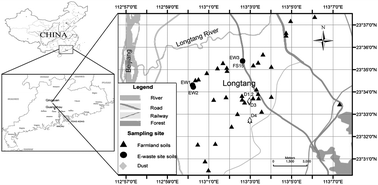In remediation of hydrocarbon contamination, it is vital to be able to monitor the levels of the desired relatively harmless end-product CO2. There are a large number of different ways to check hydrocarbon degradation varying in cost and complexity.
Differentiating naturally derived CO2 from contaminant-derived CO2 for accurate measurements is often a problem. Carbon isotope ratios of the contaminant versus the product environment can be used. Radiocarbon analysis can monitor CO2 very effectively as fossil fuel sources are radiocarbon-free and can be compared against carbon from plants and soil from photosynthesis. Enhanced radiocarbon-depleted CO2 relative to a background measurement indicates fossil fuel degradation.
 In this HOT article, soil gas and groundwater CO2 radiocarbon analysis is used to assess whether fuel hydrocarbons at a US Navy facility are being removed naturally. Using a two end-member isotopic mixing model the researchers determine how much of the CO2 comes from fossil fuel. The model includes two components are the fossil fuel-derived and the natural organic matter-derived CO2 analysed using the one tracer, radiocarbon. The fraction of CO2 from fossil fuel was 93% at the fuel contaminated site.
In this HOT article, soil gas and groundwater CO2 radiocarbon analysis is used to assess whether fuel hydrocarbons at a US Navy facility are being removed naturally. Using a two end-member isotopic mixing model the researchers determine how much of the CO2 comes from fossil fuel. The model includes two components are the fossil fuel-derived and the natural organic matter-derived CO2 analysed using the one tracer, radiocarbon. The fraction of CO2 from fossil fuel was 93% at the fuel contaminated site.
This is further demonstrating of radiocarbon as an on-site tool for initial or ongoing analysis to assess remediation method efficiency. This HOT article as chosen by the referees is free to access for the next 4 weeks*:
Radiocarbon-depleted CO2 evidence for fuel biodegradation at the Naval Air Station North Island (USA) fuel farm site
Thomas J. Boyd, Michael J. Pound, Daniel Lohr and Richard B. Coffin
DOI: 10.1039/C3EM00008G
*Free access to individuals is provided through an RSC Publishing personal account. Registration is quick, free and simple










